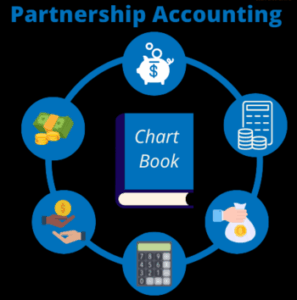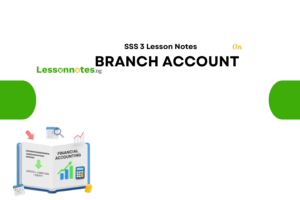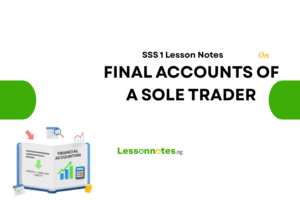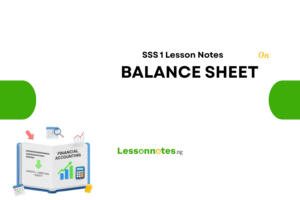Partnership Accounts SS2 Financial Accounting Lesson Note
Download Lesson NoteTopic: Partnership Accounts
INTRODUCTION TO PARTNERSHIP ACCOUNTING
A partnership can be defined as the time when two or more parties come together to run a particular business to earn some profit. These people or partners would have a share of the profits and that too in a particular ratio which is decided beforehand.
In that case, the business might require some sort of special treatment of accounting.
There are many cases where businesses with a single proprietor often tend to face some sort of issue such as lesser access to some resources or limited capital. In such cases, most people tend to enter into certain partnerships to overcome the challenges of the business.
These partnerships would allow the people to collectively share all the resources that they have and it further helps in the expansion of a business too.
FEATURES OF PARTNERSHIP
Here are some of the features that have been explained in detail for proper understanding.
- Agreement
For the partnership to function properly, there must be some sort of agreement between the parties or the partners. This includes the sharing of profits and working collectively. The partners are responsible for drawing such agreements in writing or orally. The basic function of the agreement is to ensure that all the partners are familiar with their status and functions.
- Business
One of the most important features of a particular partnership would have to be the business. According to the Partnership Act, it is not possible to have an agreement in case the partners carry out functions as charitable activities. Businesses could be professions, trades, or some sort of occupation.
- Profit-Sharing
Another main aspect that students will get to learn in the Introduction to Partnership Final Accounts is the term profit sharing. The partners must have a share of the profits that are produced by the firm. In case someone is working for the company and does not have a share of the profits, he/she may be called an employee.
- Principal-Agency Relationship
In this case, the business of the partnership might be conducted by either all the partners or just one partner who is working on behalf of all the others. This is known as the Principal Agency.
WHAT IS A PARTNERSHIP DEED?
Partners are most free to determine all the terms that their relationships will have in the partnership. This can be done based on an oral or a written agreement.
In case the agreement is made in a written format, this is known as the partnership deed. These partnership deeds are pretty simple to understand. The agreement that the firm partners would make would further fill up the partnership deed.
In a partnership account, some of the common terminologies used include:
- Capital: The amount of money or assets that each partner has invested in the partnership.
- Drawings: The amount of money or assets that each partner withdraws from the partnership for personal use.
- Profits And Losses: The financial gains and losses of the partnership as a whole.
- Distribution Of Profits: The allocation of profits among partners based on their ownership percentage.
- Partner’s Current Account: The record of transactions of each partner with the partnership, including capital contributions, drawings, and share of profits or losses.
- Partnership Agreement: The legal document that outlines the terms and conditions of the partnership, including the sharing of profits and losses and the roles and responsibilities of each partner.
- Goodwill: The value of the partnership’s reputation and customer base, which is often included as an intangible asset on the balance sheet.
- Interest On Capital: The amount of money paid by the partnership to each partner for the use of their invested capital.
- Reserves: The portion of profits that is set aside for future business needs or as a contingency fund.
- Dissolution: The termination of the partnership, which may occur due to retirement, death, or other reasons outlined in the partnership agreement.























